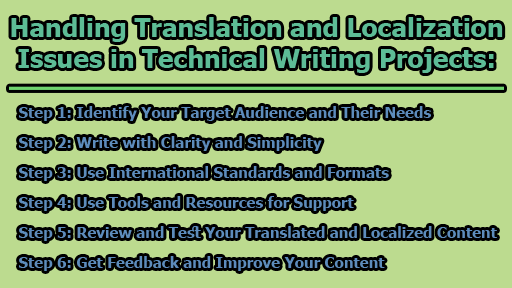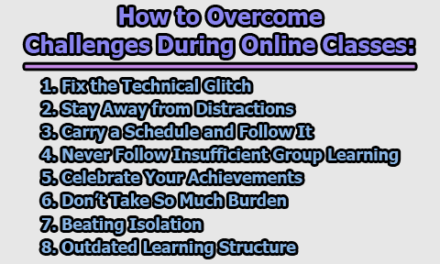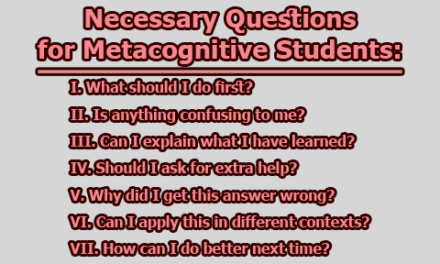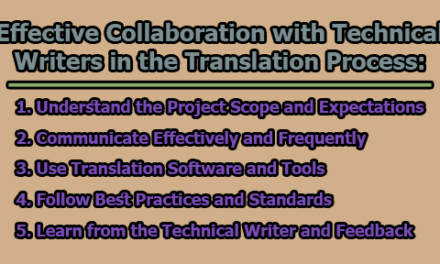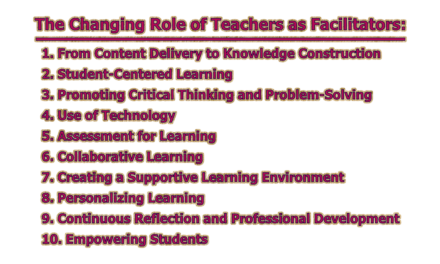Handling Translation and Localization Issues in Technical Writing Projects:
In today’s globalized world, technical writers often find themselves creating content for audiences from various countries, cultures, and languages. This diversity requires an understanding of translation and localization issues, ensuring that the content not only speaks the language but also resonates with the culture and expectations of the target audience. In the rest of this article, we will explore handling translation and localization issues in technical writing projects.
Step 1: Identify Your Target Audience and Their Needs: Before embarking on any technical writing project, it is crucial to identify your target audience and understand their specific needs. Research their language, culture, education level, technical background, and preferences. Consider their goals, challenges, and expectations when using your product or service. This information helps tailor your content to meet their requirements and prevents potential misunderstandings or conflicts.
Step 2: Write with Clarity and Simplicity: One of the fundamental principles of technical writing is clarity and simplicity. This means using clear, concise, and accurate language. Avoid jargon, slang, idioms, and metaphors that may not translate well. Adhere to conventions of grammar, punctuation, and spelling. Consistency in terminology, formatting, and style throughout your document is essential. Writing with clarity and simplicity facilitates translation and localization while making the content more accessible and understandable for your target audience.
Step 3: Use International Standards and Formats: Technical writers should adhere to international standards and formats to ensure content is universally comprehensible. Employ the metric system, ISO date format (YYYY-MM-DD), and the 24-hour clock for measurements, dates, and times. Use neutral and inclusive language, avoiding cultural references and assumptions that may not resonate with all readers. Respect the diversity and sensitivity of your target audience, which will enhance accessibility and consistency.
Step 4: Use Tools and Resources for Support: In the digital age, an array of tools and resources are available to assist in translation and localization.
- Translation software: Tools like Google Translate, Microsoft Translator, and SDL Trados can automatically translate content from one language to another, employing AI or human translators.
- Localization software: Tools like Transifex, Crowdin, and Phrase help adapt content to specific market requirements, including currency, units, symbols, colors, images, and layout.
- Style guides: Consult popular style guides like Microsoft Writing Style Guide, Google Developer Documentation Style Guide, and IBM Style Guide for language and culture-specific guidelines.
- Glossaries: Employ glossaries such as Microsoft Terminology Collection, Google Glossary, and IBM Terminology for consistent translation and localization of terms and definitions.
Step 5: Review and Test Your Translated and Localized Content: After the translation and localization process, thorough review and testing are necessary to ensure quality, accuracy, and usability. Look for errors, inconsistencies, and ambiguities. Address any cultural or linguistic issues that might impact the target audience’s understanding. Test content on various devices, browsers, and platforms to ensure functionality and compatibility. Tools like Grammarly, Hemingway, and LingoHub can be instrumental in this review and testing phase.
Step 6: Get Feedback and Improve Your Content: The final step in handling translation and localization issues is to seek feedback and continuously improve your content. Gather input from your target audience, translators, localizers, and stakeholders to assess content effectiveness and satisfaction. Monitor content performance and usage metrics such as views, downloads, ratings, and comments. Leverage feedback and data to identify areas for improvement and make necessary adjustments to your content.
In conclusion, handling translation and localization issues in technical writing projects is essential in our globalized world. By following these six steps – identifying your target audience’s needs, writing with clarity and simplicity, using international standards and formats, leveraging tools and resources, reviewing and testing content, and seeking feedback for continuous improvement – technical writers can ensure that their content speaks not just the language but also the culture and expectations of the diverse audiences they serve. This approach will result in more effective and accessible technical documentation, ultimately benefiting both the writers and their readers.

Assistant Teacher at Zinzira Pir Mohammad Pilot School and College

